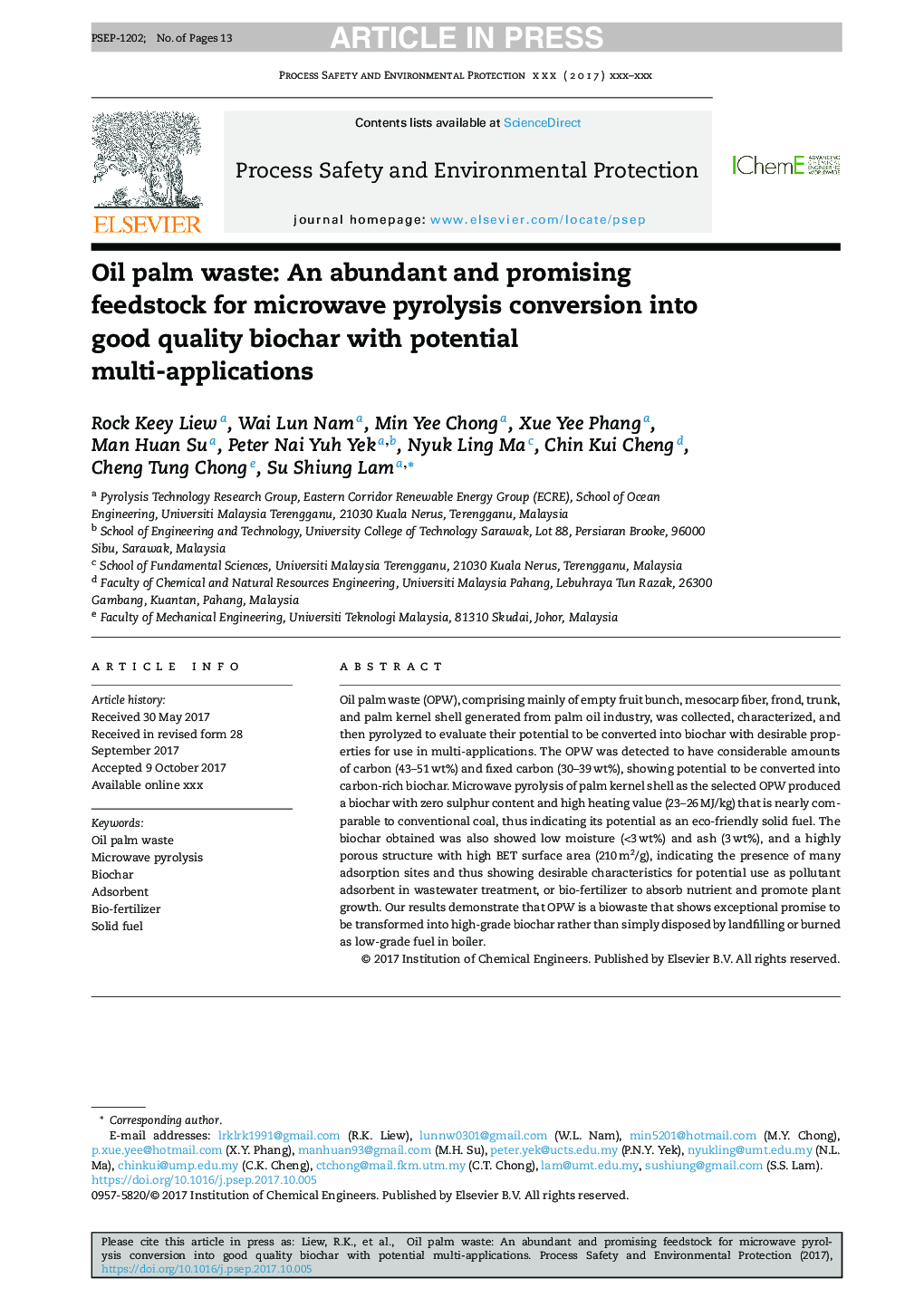| Article ID | Journal | Published Year | Pages | File Type |
|---|---|---|---|---|
| 6974106 | Process Safety and Environmental Protection | 2018 | 13 Pages |
Abstract
Oil palm waste (OPW), comprising mainly of empty fruit bunch, mesocarp fiber, frond, trunk, and palm kernel shell generated from palm oil industry, was collected, characterized, and then pyrolyzed to evaluate their potential to be converted into biochar with desirable properties for use in multi-applications. The OPW was detected to have considerable amounts of carbon (43-51Â wt%) and fixed carbon (30-39Â wt%), showing potential to be converted into carbon-rich biochar. Microwave pyrolysis of palm kernel shell as the selected OPW produced a biochar with zero sulphur content and high heating value (23-26Â MJ/kg) that is nearly comparable to conventional coal, thus indicating its potential as an eco-friendly solid fuel. The biochar obtained was also showed low moisture (<3Â wt%) and ash (3Â wt%), and a highly porous structure with high BET surface area (210Â m2/g), indicating the presence of many adsorption sites and thus showing desirable characteristics for potential use as pollutant adsorbent in wastewater treatment, or bio-fertilizer to absorb nutrient and promote plant growth. Our results demonstrate that OPW is a biowaste that shows exceptional promise to be transformed into high-grade biochar rather than simply disposed by landfilling or burned as low-grade fuel in boiler.
Related Topics
Physical Sciences and Engineering
Chemical Engineering
Chemical Health and Safety
Authors
Rock Keey Liew, Wai Lun Nam, Min Yee Chong, Xue Yee Phang, Man Huan Su, Peter Nai Yuh Yek, Nyuk Ling Ma, Chin Kui Cheng, Cheng Tung Chong, Su Shiung Lam,
